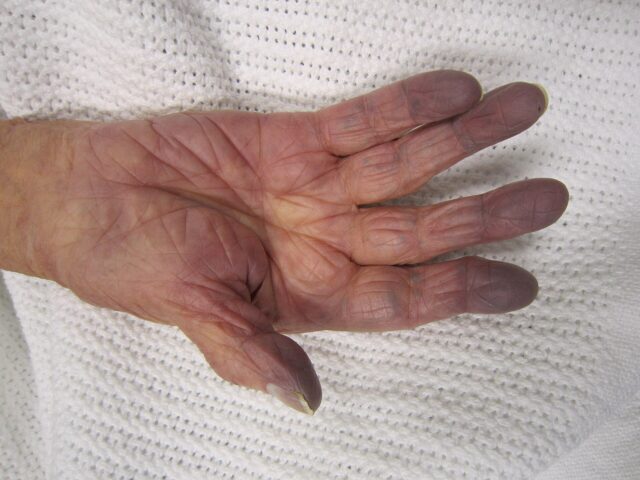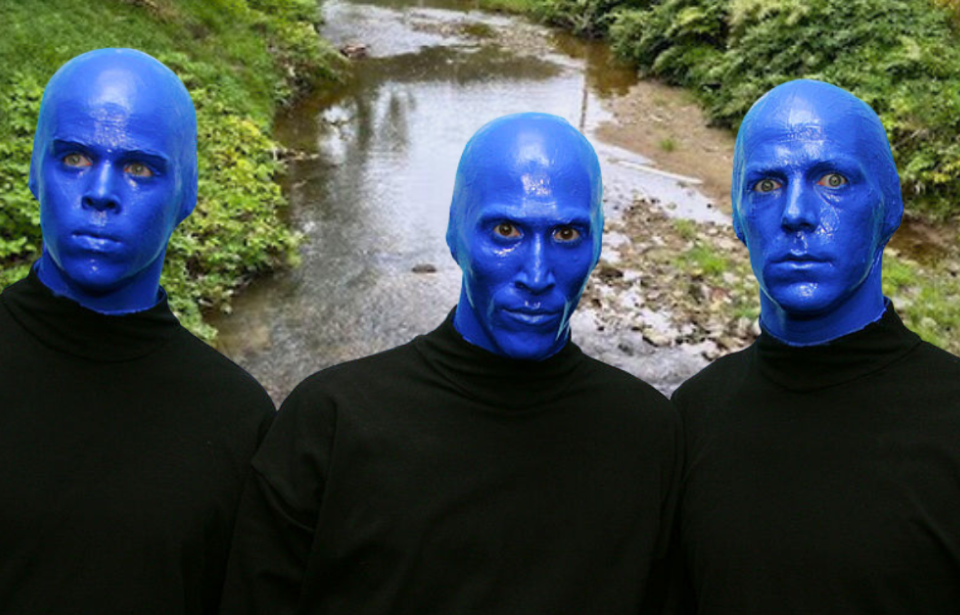Nestled in the heart of Appalachia lies a tale as mysterious as it is captivating: the story of the blue-skinned people of Kentucky. This phenomenon, centered around the enigmatic Fugate family, has intrigued scientists and storytellers for generations. The distinct azure hue that marked their skin became a symbol of an extraordinary genetic condition known as methemoglobinemia and created a saga that spanned geography, genetics, and the complex interplay of isolation and intermarriage.
Origin of the blue-skinned people of Kentucky
The Blue Skinned Family
A family of people with blue skin lived in Kentucky for many generations. The Fulgates of Troublesome Creek are thought to have gained their blue skin through combination of inbreeding and a rare genetic condition known as methemoglobinemia. pic.twitter.com/Kr9ol6sRv8
— Fact-O-Pedia (@PediaFact) June 7, 2021
Living in isolated Appalachia, the Fugates inhabited the region for well over six generations. It all started when a French orphan named Martin Fugate settled at Troublesome Creek with his red-headed American wife. The pair, who’d married and settled in the area around 1820, were both carriers of the recessive gene for methemoglobinemia, which meant four of their seven children were also carriers.
Living in the remote Kentucky mountains, the Fugates were rarely able to interact with others, leading them to marry and have children with members of their own bloodline. As they continued reproducing within this limited gene pool, the trait that caused their blue skin continued among their descendants.
Many generations later, a great-great-great-great grandson was born in a modern hospital, near where the family had been living, inheriting the gene. His blue skin baffled doctors until relatives explained this was common among family members, stopping the planned blood transfusion. As time went on, the baby’s blue hue slowly lessened.
The Fugate family lived in isolation

Nestled in the picturesque Appalachian mountains, the Fugates found themselves secluded from the broader world. This isolation wasn’t just about physical distance, as it both shaped their way of life and had an impact on the prevalence of their condition.
Geography played a pivotal role in the perpetuation of the blue skin trait within the family. At the time, the region didn’t have an abundance of roads or railways, meaning it wasn’t uncommon for people to never see their neighbors. In a way, the Appalachian mountain’s seclusion created a sort of genetic pocket, allowing the combination of genes responsible for methemoglobinemia to persist over generations.
Discovery of the blue Fugates

At the heart of this story is Ruth Pendergrass, a compassionate nurse whose encounter with the Fugate family in the mountains of Kentucky marked the beginning of a remarkable journey. While working around Troublesome and Ball creeks, Pendergrass easily noticed the family’s unusual appearance and, intrigued, embarked on a mission to understand the root cause.
Recognizing the significance of what she’d stumbled upon, Pendergrass became the link between the Fugates and the medical community. She enlisted the help of hematologist Madison Cawein III, who began a detailed study of their condition, opening doors to a deeper understanding of methemoglobinemia and setting in motion concerted efforts to raise awareness about the condition.
Social consequences and stigma surrounding the Fugate family

Living with a visible and rare genetic condition meant that the blue-skinned Fugates became the subject of curiosity, speculation, and, sometimes, outright prejudice. Their distinctive skin color didn’t fit the commonly seen skin tones; rather, it caused them to stand out among all whom they came across.
Misconceptions about the phenomenon fueled stereotypes, ranging from heart disease to a lung disorder, which saw them having to contend with the challenge of educating others about the genetic basis of their condition. Discrimination – subtle and overt – became a part of their experience, shaping their interactions with their neighbors and influencing their sense of belonging within the community.
In the face of societal scrutiny, the Fugates displayed resilience and strength, and the majority lived to be in their 80s and 90s. Even though they had a genetic disorder and lived long lives, they managed to do so without having any serious illnesses.
The medical condition: methemoglobinemia

The Fugates’ appearance is tied to a rare blood problem known as methemoglobinemia. The condition messes with how blood carries oxygen, so, instead of a regular skin color, the family wound with a cool shade of blue.
Normally, hemoglobin, the protein responsible for carrying oxygen in red blood cells, cycles between states, with oxygen-binding ferrous iron at its core. With methemoglobinemia, however, an oxidized form of iron, ferric iron, accumulates in the hemoglobin molecule, reducing its ability to efficiently transport oxygen. This results in a decrease in its oxygen-carrying capacity, resulting in a bluish discoloration of the skin.
The Fugates’ unique blue hue, therefore, is a visible manifestation of this internal disruption, shedding light on the intricate interplay between blood chemistry and skin appearance.
That being said, the family weren’t the only ones to have had a blueish skin color, as seen with Paul Karason, who took colloidal silver to treat his acid reflux and arthritis. As a result, he, too, had a purple, almost blueish, skin tone.
End of the blue-skinned people of Kentucky

The blue-skinned people of Kentucky have etched their story into the cultural identity of the Appalachian region. Despite facing societal challenges, the Fugates embraced their unique heritage; their distinctive blue skin has become a lasting symbol woven into the fabric of Appalachia’s cultural narrative.
More from us: The Enigmatic Tale of Pablo Escobar’s Wife, Maria Victoria Henao
As time progressed, so, too, did medical understanding. The blue skin phenomenon within the family gradually diminished, and advances in medical knowledge allowed for better management of methemoglobinemia, leading to a decrease in the visibility of the condition in subsequent generations.
